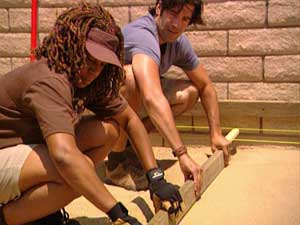Paver
Tasks & duties

Pavers may do some or all of the following:
-
discuss paving designs with clients
-
draw or receive a basic design of the area to be paved
-
work out construction costs, including labour and materials
-
give clients a quote
-
measure the area to be paved
-
dig out the area to be paved
-
level and prepare the surface for paving
-
cement edges of the paved area
-
lay paving stones and grout (fill with sand or mortar) between the gaps
-
cut paving stones to the correct size and shape
-
use a compacting machine to finish the paved area
-
run their own businesses
Specialisations
Pavers may specialise in certain areas. Landscape pavers generally pave paths and gardens, while commercial pavers usually pave roads, park areas and subdivided sections.
Skills & knowledge

Pavers need to have:
-
knowledge of paving methods and materials
-
skill caring for paving equipment
-
building and carpentry skills
-
the ability to interpret plans and clients' ideas
-
communication and listening skills
-
drawing and design skills
-
planning skills
-
knowledge of safety procedures, as they use cutting equipment and may come across hazards on worksites
-
basic maths skills
Pavers who are self-employed need to have business skills.
Entry requirements
There are no specific requirements to become a paver as skills are gained on the job.
Secondary education
There are no specific secondary education requirements to become a paver. However, School Certificate or NCEA equivalent maths, English and technical drawing may be useful.
Tertiary education
No tertiary training is required to become a paver. However, you can take courses in paving through some institutes of technology and polytechnics. These courses are often combined with training in bricklaying and tiling.
Useful experience
Useful experience for pavers includes:
-
work in construction
-
work as a labourer
-
any work that involves physical labour such as road construction
Video
From just a job on you tube
Related courses
Bricklaying and Stonemasonry
Building Construction Management
For more information, please refer to Career Services.
Document Actions
